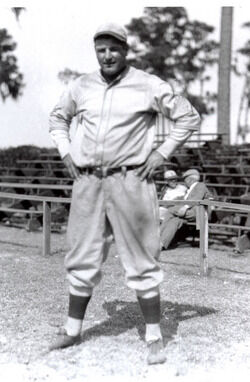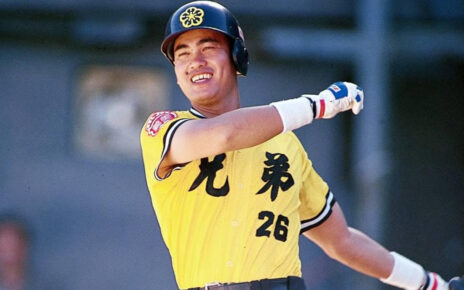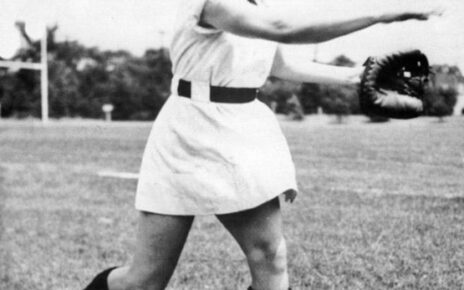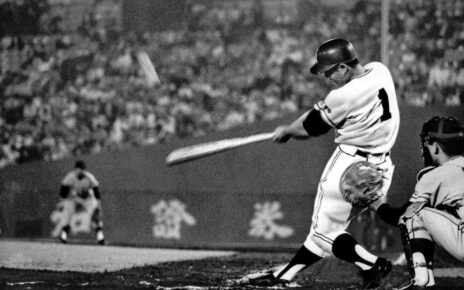In baseball, we tend to focus on the major leagues. The vast majority of baseball fans care about the major leagues and major leagues only. The recent announcement by Major League Baseball that they were granting major league status to the Negro Leagues greatly affects the stats and history of the game for those whose main attraction to baseball is the major leagues. For places like this site it only served to further entrench the idea that baseball beyond the majors is largely ignored to the detriment of baseball and fans alike. This site exists to shed a light on the entirety of professional baseball, from the major leagues to every affiliated and unaffiliated league that there ever was, is, or will be.
With the above in mind, it’s time to introduce a new column to Words Above Replacement. Baseball Beyond MLB is a sort of “remember this player” endeavor, only with more of a focus on the fact that the majority likely don’t know anything about the player in question. Some players will have appeared in MLB, but they also had productive careers in unaffiliated or independent baseball. The careers of these players should be known, more people need to discover the rare feats, longevity, and fun tidbits that make up the totality of baseball, not just MLB’s stratosphere. What better way to start than with a look at a guy who did appear in the majors for one year, but spent 19 other years as a hell of a professional ballplayer: Buzz Arlett.
Arlett first stepped onto a pro baseball field in 1918 for the Oakland Oaks of the Pacific Coast League. Arlett was an interesting case study from the start. He began his pro career as a promising pitcher who showed a surprising ability to hit. Then an arm injury caused him to spend his middle years as an outfielder who made very rare appearances on the mound. The former pitcher ended his career as a position player only.
For the first six years of his career, Arlett was a respectable if somewhat wild pitcher. Arlett had a pair of dominant seasons toeing the rubber. In 1920 he went 29-17 for the Oaks, sporting a 2.89 ERA and 1.320 WHIP in 427.1 innings. He struck out 105 opposing hitters that season but also walked 134. Come 1922, Arlett has possibly his best season as a pitcher. Still playing with the Oaks he went 25-19 with a 2.77 ERA and 1.358 WHIP in 374.0 innings pitched. For the first time in his career, he struck out more, 128, than he walked, 112. This era of baseball had many noted great pitchers with command issues, especially when their primary pitch was the spitball, like Arlett. Combine the spitball with the PCL’s harsh schedule, 200+ games a season, and it’s no surprise that Arlett’s arm turned up dead in 1924 and he lost any appeal he had garnered with major league teams.
Not to be denied, Arlett asked to be placed in the outfield and the Oaks obliged. The California native managed 628 at-bats (there are no plate appearances, as walks for hitters were not actively tracked, in this era of the PCL and thus no On Base Percentage either) where he slashed .328/-/.606. He smashed 33 home runs and 57 doubles, while his speed helped him to 19 triples and 24 stolen bases. Arlett never looked back after that, hitting above .340 and slugging more than .550 in every one of his remaining seasons with Oakland.
The majors came calling in 1931 in the form of the National league’s Philadelphia Phillies. He never appeared on the mound for the Phils, he spent the season in right field and at first base. In his lone major league season, Arlett accumulated 469 plate appearances, a .313/.387/.583 slash line, 18 home runs, 26 doubles, a 139 OPS+, and an rWAR of 2.3. Needless to say, it came as a shock to Arlett and many of his peers that he was sent to the minors to start 1932 and would never again see a big-league field. The rub was that his defense wasn’t up to snuff. However, an RF/9 of 2.32 in right field and 9.59 at first base don’t support this argument. That’s not to say Arlett was a great fielder, but he was quite average and only needed to be that to accommodate his quite compelling bat.
Arlett would spend the final six years of his professional career with a handful of affiliated and unaffiliated teams. The entire time all Arlett did was hit. Not counting his final four-game season, he never had a Batting Average below .316 or a Slugging Percentage worse than .607. 1934 was likely the best of Arlett’s final years. He started the season with the Birmingham Barons of the Southen Association before jumping ship to the Minneapolis Millers of the American Association. With the two clubs, the hefty Arlett slashed .321/-/.670 in 558 at-bats. He clubbed 48 round-trippers and 41 doubles, while he still had the speed to muster up 5 triples and 11 stolen bases.
All told Arlett finished his pitching career with a record of 108-93, a 3.39 ERA, 1.372 WHIP, 513 strikeouts, and 601 walks in 1,882.2 innings. Those are, as stated before, respectable numbers. However, where Arlett really shines are in his final numbers as a hitter. The eventual Minneapolis resident slashed .340/.387/.601 across 8,514 at-bats. He produced 454 home runs, 630 doubles, 116 triples, a total of 2,892 hits, and 203 stolen bases. Keep in mind, that’s without his many missing walks or the missing records of any playoff runs he had in non-MLB play. Buzz Arlett may only have played one season in the big leagues, but his career is one worth remembering.
Lead photo courtesy of Unknown – Unknown




